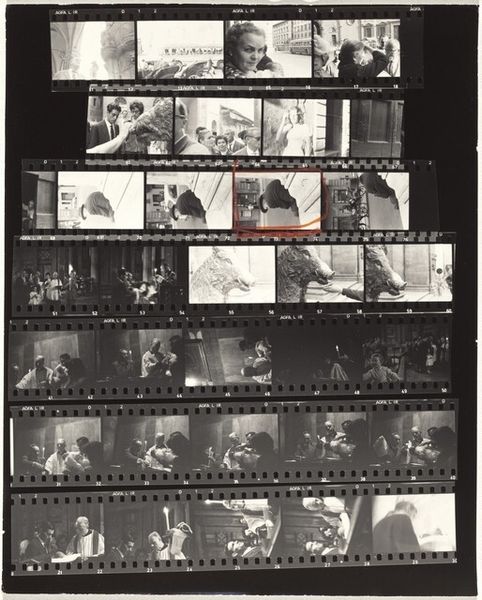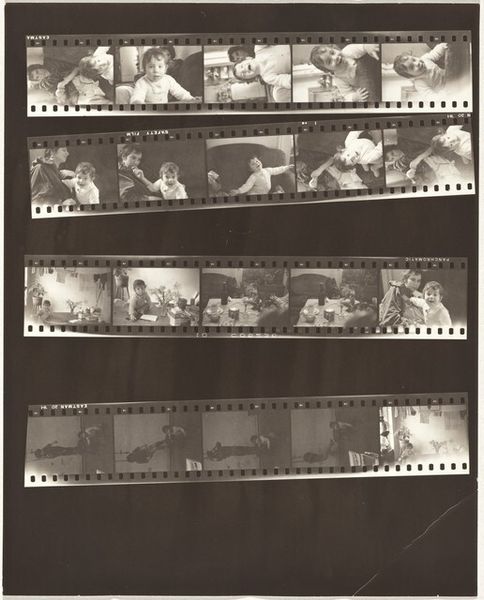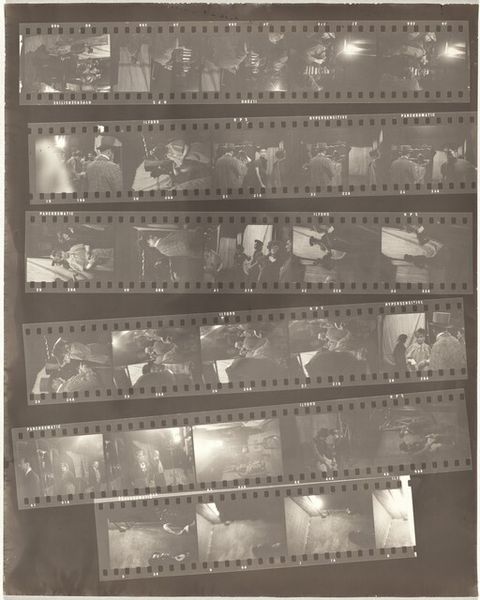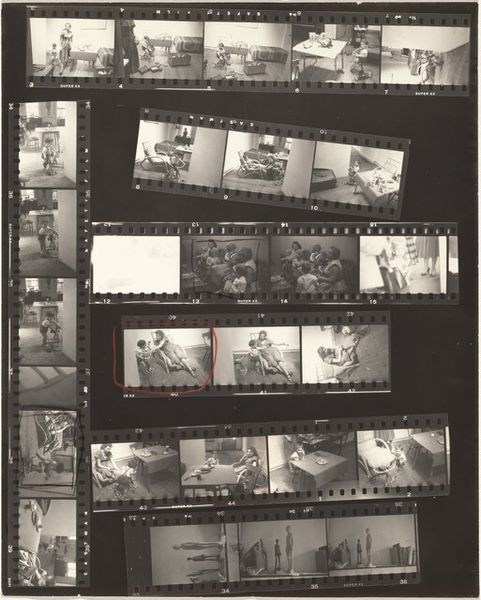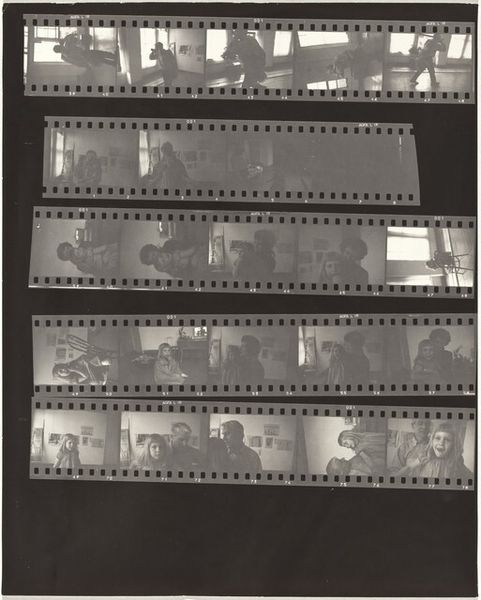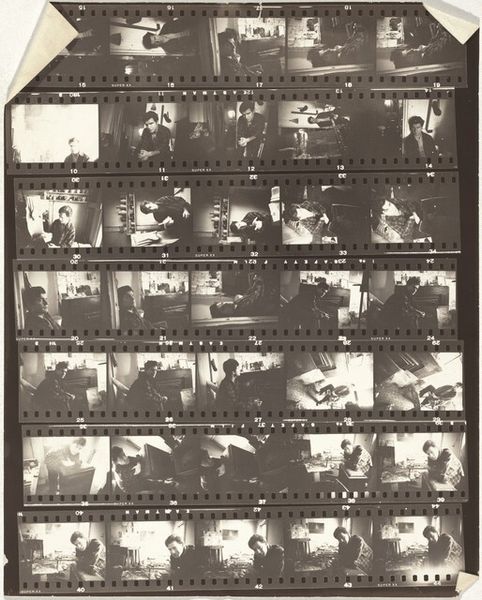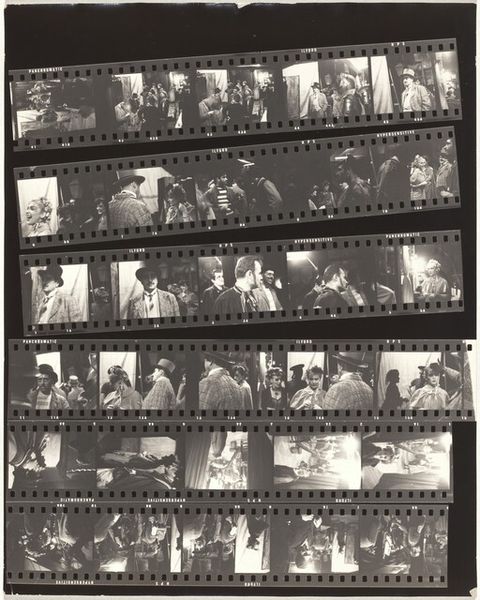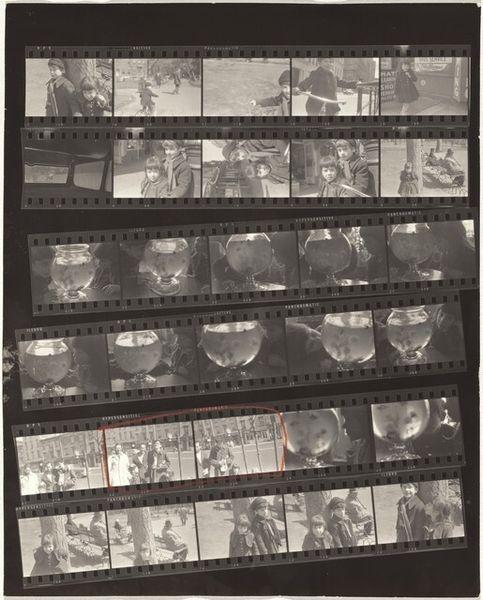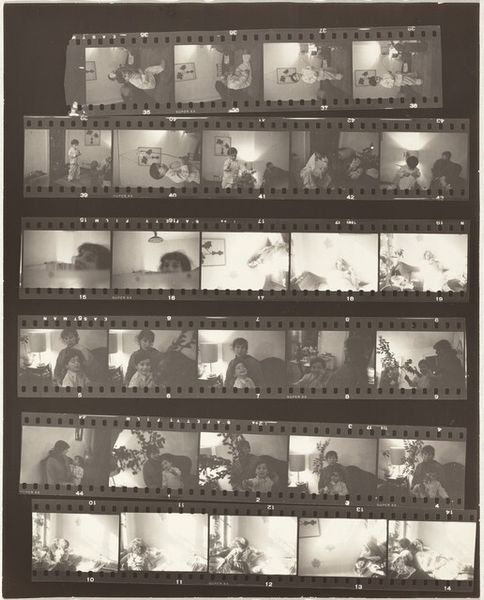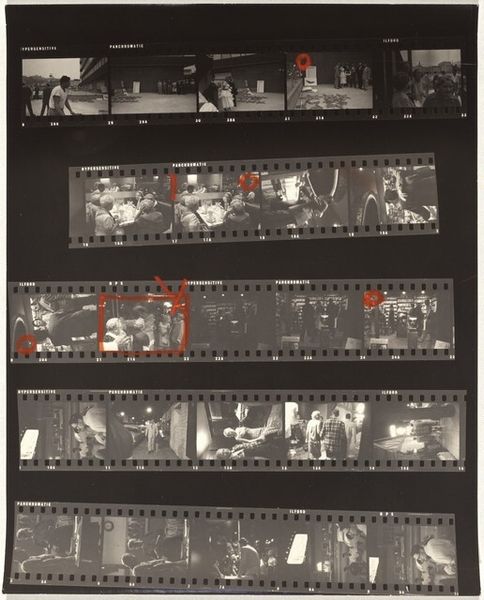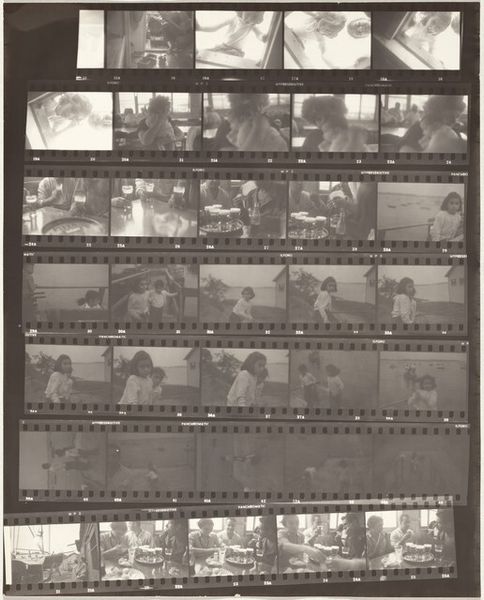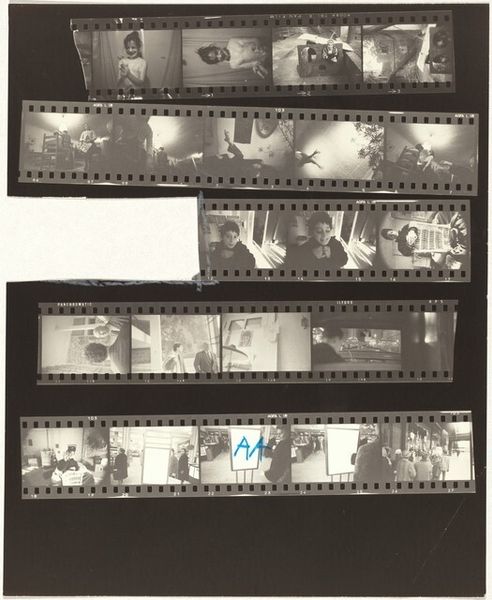
photography, gelatin-silver-print
#
portrait
#
street-photography
#
photography
#
gelatin-silver-print
#
modernism
Dimensions: overall: 25.1 x 20.1 cm (9 7/8 x 7 15/16 in.)
Copyright: National Gallery of Art: CC0 1.0
Curator: This is Robert Frank’s "Delon and Viti--Rome no number," taken in 1964. It’s a gelatin-silver print presented as a contact sheet—an arrangement of numerous exposures on one piece of photographic paper. Editor: There's an almost cinematic feel to the composition—like film stills strung together. It gives a real sense of intimacy, though tinged with the cool distance often found in candid photography. The marked selections jump out immediately too. Curator: Precisely. Seeing the editing process laid bare, as it were, allows us to see Frank's decision-making. He crops into moments, creating a fractured narrative, maybe reflecting the transient nature of celebrity, the unreality. It also throws you into considering the making of the thing. Editor: I immediately start wondering about labor and time in crafting these kinds of works. Think about the cost of silver gelatin at the time and the relative value that contact sheets had! He then marks the works with what seems to be grease pencil to create the selected crops, and now that adds another element—like defacing the image a little, re-engaging in an aggressive manner. The reversal of the film is also so potent. Curator: Frank had a knack for capturing raw emotion. These subjects, actors Alain Delon and Monica Vitti, are seen between takes, seemingly. You see the unguarded moments, hinting at vulnerability, and those suspended intimate moments with what seems to be other women and family—but it remains obscured. Even glamour wears thin and fragile under his lens. The way the composition has film at many different angles gives off a destabilizing sense. Editor: Definitely. Frank's modernism shines through his focus on the mundane, but also the mechanical reproduction—the dots on the side of the print make me think of mass production of photo magazines and celebrity ephemera. We're getting at both the human condition and the celebrity life here and yet questioning it at every angle. Curator: In its fragmentary and blurred nature, I also get the feeling that Frank pushes us to acknowledge that nothing is truly solid. And that meaning comes from the gaps and pauses in these lives. It’s deeply poetic and insightful. Editor: Yes, Frank provides a profound exploration of photography’s means to examine people in their unguarded and even broken states and challenges the myth of stardom by pointing to material processes and the fragmented nature of image-making.
Comments
No comments
Be the first to comment and join the conversation on the ultimate creative platform.
